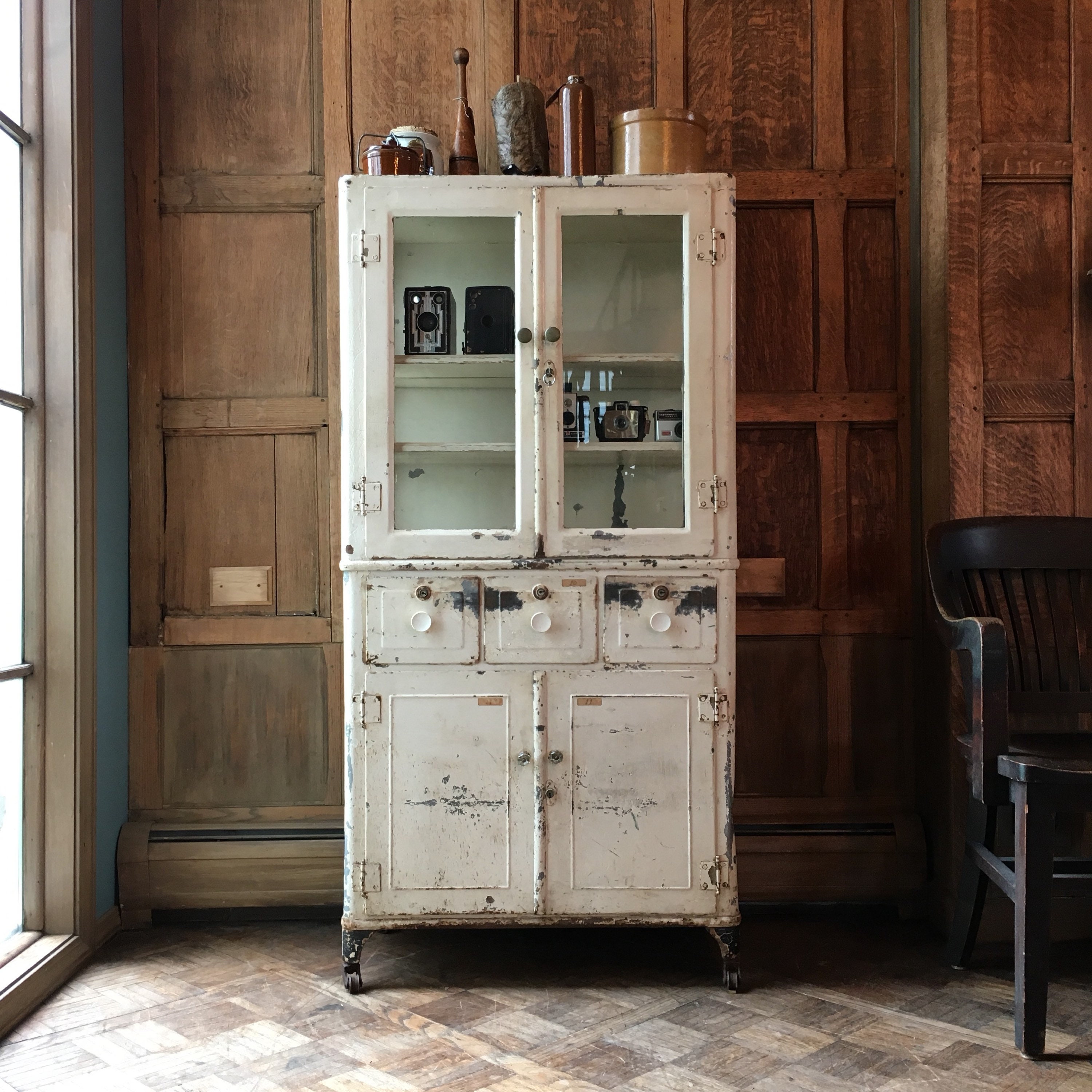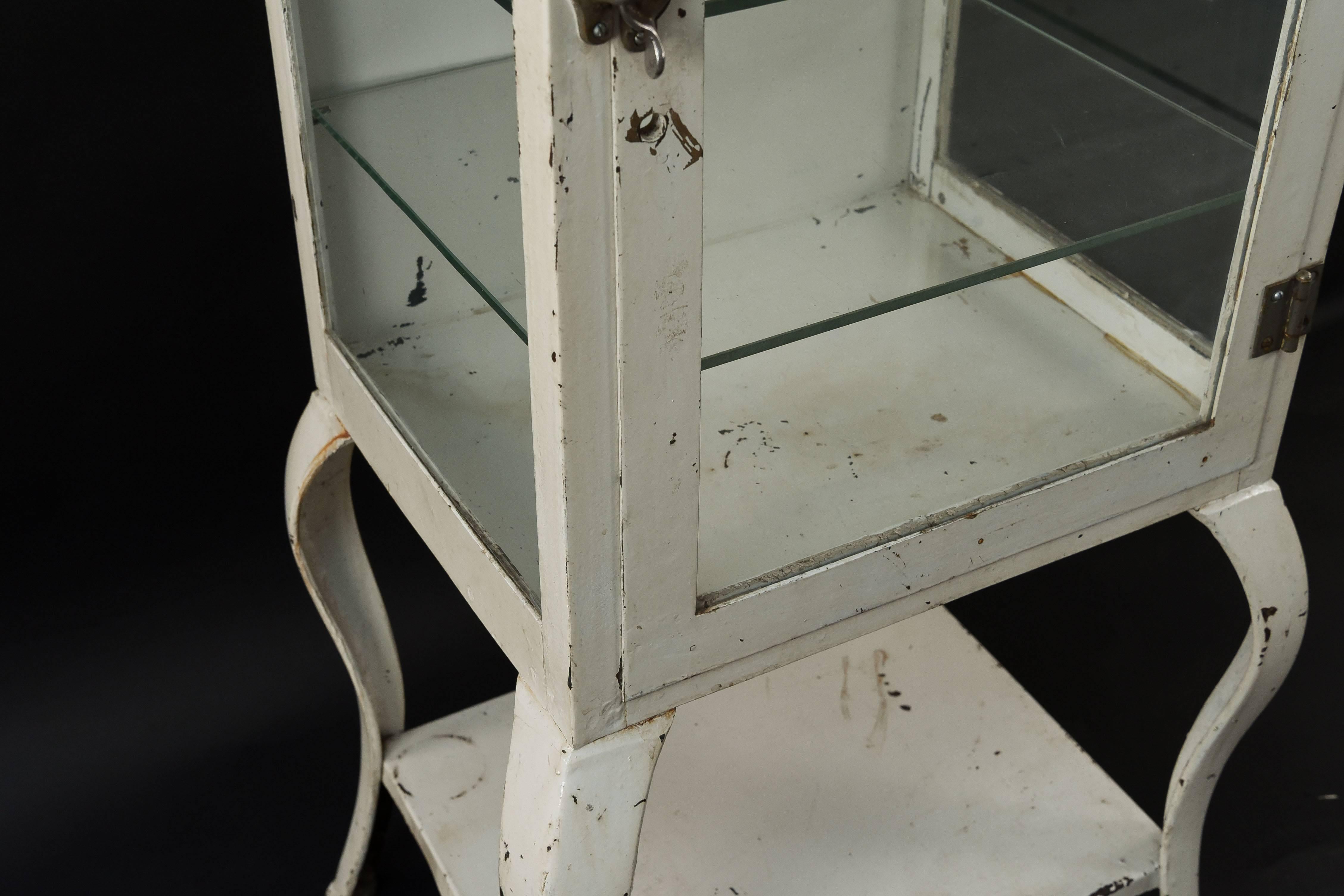Design and Construction Features of Antique Hospital Medicine Cabinets

Antique hospital medicine cabinets, often overlooked relics of a bygone era, offer fascinating insights into the evolution of medical practices and design aesthetics. Their construction and design reflect the materials and technologies available at the time, as well as the specific needs of the healthcare setting. Understanding these features allows us to appreciate their historical significance and the ingenuity of their creators.
Materials and Manufacturing Processes
The materials used in constructing antique hospital medicine cabinets varied depending on the period and the manufacturer. Common materials included various hardwoods such as oak, mahogany, and cherry, chosen for their durability and resistance to moisture and disinfectants. Metal, primarily steel or iron, was frequently used for framing, hinges, and locking mechanisms. The use of porcelain or enamel paint was also common, providing a smooth, easily cleanable surface crucial for maintaining hygiene in a medical environment. Glass, often thick and durable, was essential for the cabinet doors and sometimes for internal shelving. Manufacturing processes involved skilled carpentry, metalworking, and finishing techniques. Cabinet components were often crafted individually and then assembled, showcasing the precision and craftsmanship of the era. For example, intricate joinery techniques were employed in the construction of wooden cabinets, while metal components were often hand-forged or cast. The application of paint or enamel required multiple coats and careful curing to ensure a durable and sanitary finish.
Design Elements and Styles
Antique hospital medicine cabinets exhibit a range of design elements reflecting evolving tastes and technological advancements. Typical features include varying sizes, from compact wall-mounted units to larger, free-standing cabinets. Compartmentalization was a key design element, with numerous drawers, shelves, and compartments to organize a variety of medical supplies. Locking mechanisms, often intricate and robust, ensured the secure storage of medications and sensitive instruments. Decorative features were sometimes incorporated, such as etched glass, ornate metalwork, or decorative molding, although these were often less prominent than in purely domestic cabinets, prioritizing functionality over elaborate aesthetics.
Comparative Table of Antique Hospital Medicine Cabinet Styles
The following table compares four different styles of antique hospital medicine cabinets, highlighting their distinctive characteristics:
| Style | Material | Size (Approximate) | Key Features |
|---|---|---|---|
| Wall-Mounted, Small | Wood (Oak), Metal hinges | 12″ x 12″ x 4″ | Simple design, single door, small internal shelves, basic lock. |
| Wall-Mounted, Large | Wood (Mahogany), Metal framing, Glass door | 24″ x 18″ x 6″ | Multiple internal shelves and drawers, more complex locking mechanism. |
| Free-Standing | Wood (Cherry), Metal legs and handles | 36″ x 24″ x 12″ | Larger capacity, multiple doors, internal compartments, potentially including drawers and specialized storage for instruments. |
| Porcelain-Enameled Steel | Steel, Porcelain Enamel | Variable | Seamless, easily cleanable surface, typically simpler design, often featuring a single door. |
Impact of Design Choices on Functionality and Durability
The choice of materials directly impacted the functionality and durability of these cabinets. The use of hardwoods provided strength and resistance to wear and tear, while the use of metal offered robust framing and durable hinges. The smooth surfaces of porcelain enamel were crucial for easy cleaning and disinfection, essential in a medical context. The compartmentalization design facilitated the organization and efficient access to medical supplies. For example, smaller cabinets were often placed in examination rooms for immediate access to frequently used items, while larger, free-standing cabinets were used in storage rooms for bulk supplies. Robust locking mechanisms ensured the secure storage of medications and controlled substances. The overall design choices reflected a balance between practicality, hygiene, and security, essential considerations in the hospital environment of the past.
Collecting and Restoring Antique Hospital Medicine Cabinets

These fascinating pieces of medical history offer a unique blend of functionality and aesthetic appeal. Their intricate details and sturdy construction reflect a bygone era of medical practice, making them highly sought-after collectibles. However, navigating the world of antique collecting requires careful consideration, particularly when dealing with items that might have endured years of wear and tear.
Authenticity Verification, Antique hospital medicine cabinet
Identifying genuine antique hospital medicine cabinets requires a keen eye for detail and a good understanding of their construction methods. Reproductions often lack the subtle nuances and imperfections that characterize authentic pieces. Look for telltale signs of age, such as wear on the hinges, discoloration of the paint or finish, and variations in the wood grain. Pay close attention to the hardware; original pieces frequently display unique designs or markings not found on modern reproductions. Comparing the cabinet’s construction techniques to known examples from specific periods can also aid in authentication. Consulting with experienced antique dealers or appraisers can provide valuable expertise in confirming authenticity. Be wary of overly perfect condition – genuine antiques almost always exhibit some signs of age and use.
Restoration and Preservation Methods
Proper restoration is crucial for preserving the historical integrity and aesthetic value of these cabinets. A phased approach ensures that the cabinet’s original features are maintained.
- Cleaning: Begin with a gentle cleaning using a soft cloth and a mild, pH-neutral cleaner. Avoid harsh chemicals or abrasive materials that could damage the finish. For stubborn dirt, consider using a specialized wood cleaner appropriate for the cabinet’s finish. Always test any cleaning solution on an inconspicuous area first.
- Repair: Address any structural damage before proceeding to refinishing. This may involve repairing loose hinges, replacing broken glass, or reinforcing weakened wood. Use appropriate wood fillers and glues designed for antique restoration. For more extensive repairs, consult a professional furniture conservator.
- Refinishing: Refinishing should be undertaken only when necessary and should aim to preserve the cabinet’s original character. Avoid stripping the original finish unless absolutely necessary. If refinishing is required, use appropriate stains and finishes compatible with the original materials. Always strive for a subtle and understated approach that complements, rather than obscures, the cabinet’s age and history.
Display and Preventative Maintenance
Proper display and preventative maintenance are essential for long-term preservation.
Antique hospital medicine cabinet – An ideal display environment would be a climate-controlled room, ideally with a stable temperature between 65-75°F and a relative humidity of 40-50%. This helps to prevent warping, cracking, and other forms of damage caused by temperature and humidity fluctuations. The cabinet should be placed away from direct sunlight, heat sources (such as radiators or fireplaces), and sources of moisture. Imagine a dimly lit corner of a study or library, perhaps with soft, indirect lighting from a nearby lamp that casts a gentle glow on the cabinet’s polished surface, highlighting its intricate details without causing fading. The air should be clean and dust-free. Regular dusting with a soft cloth or a compressed air duster is recommended. Periodically inspect the cabinet for any signs of damage or deterioration and address any issues promptly. Consider using museum-quality wax or polish to protect the finish from dust and minor scratches.
